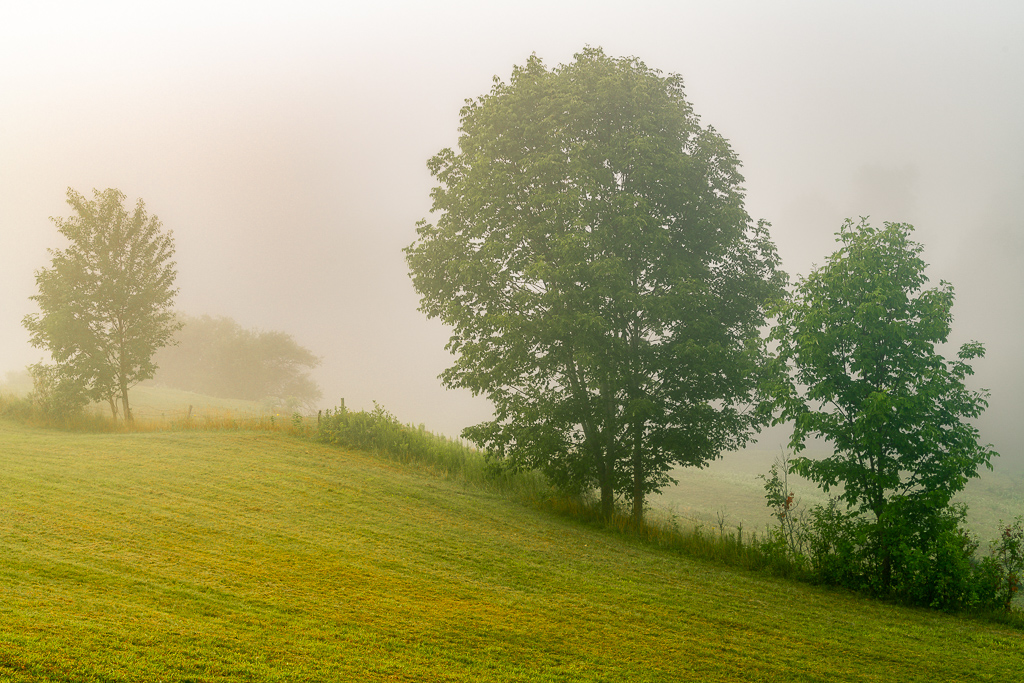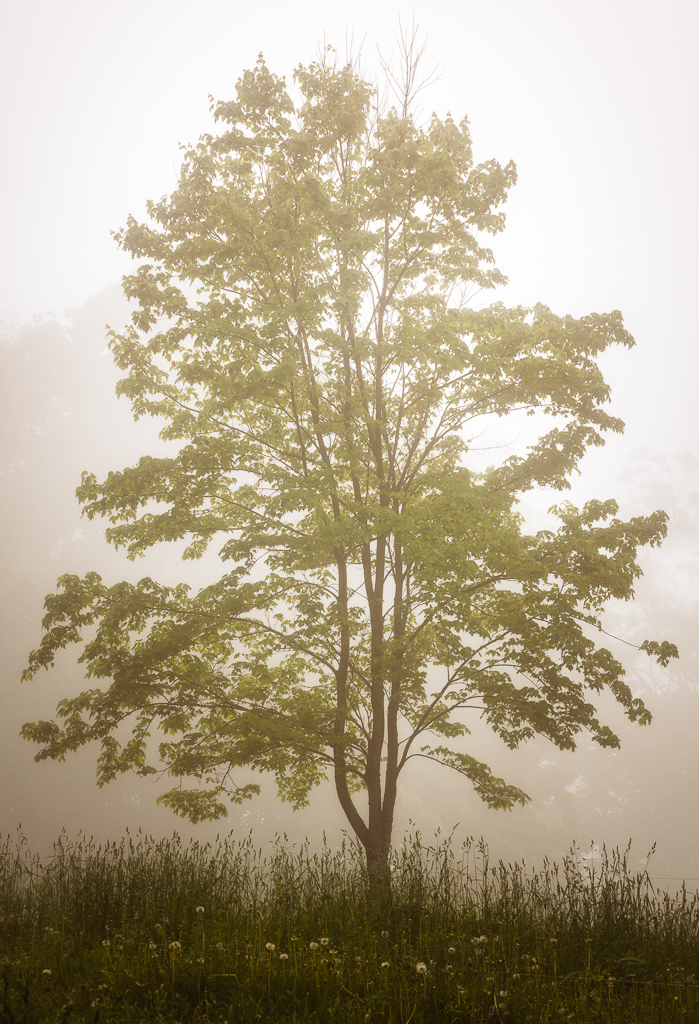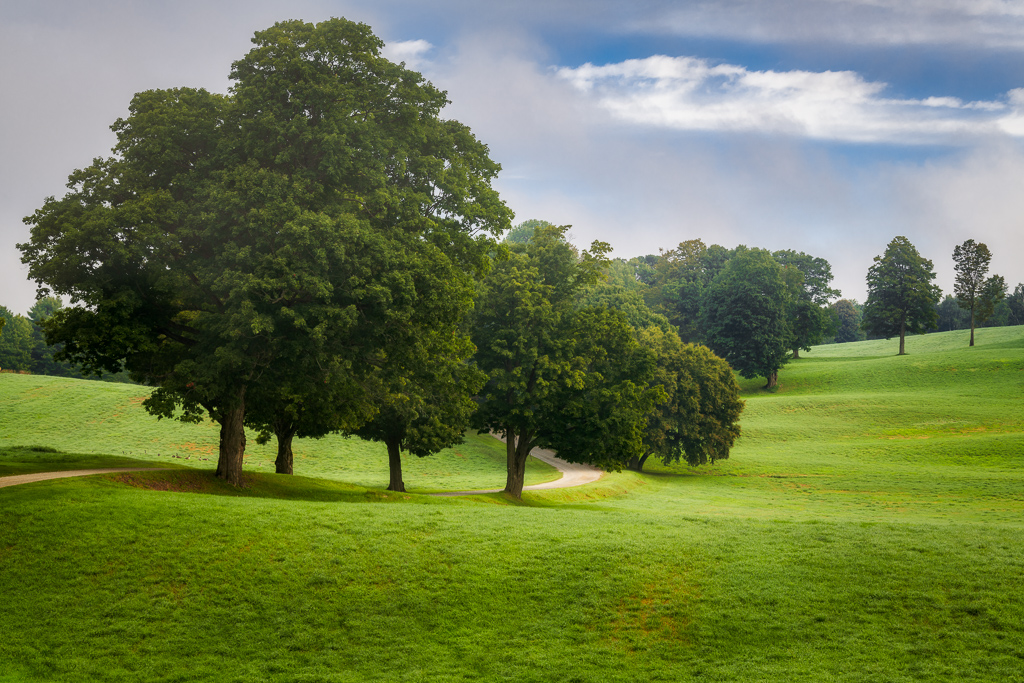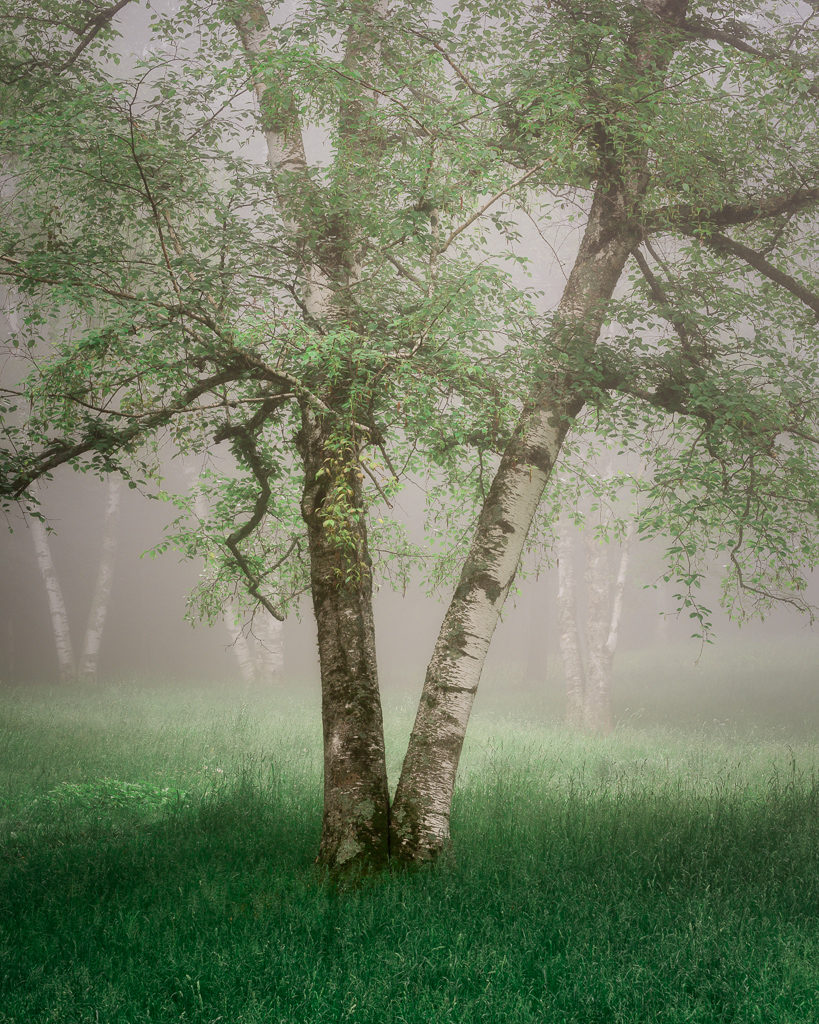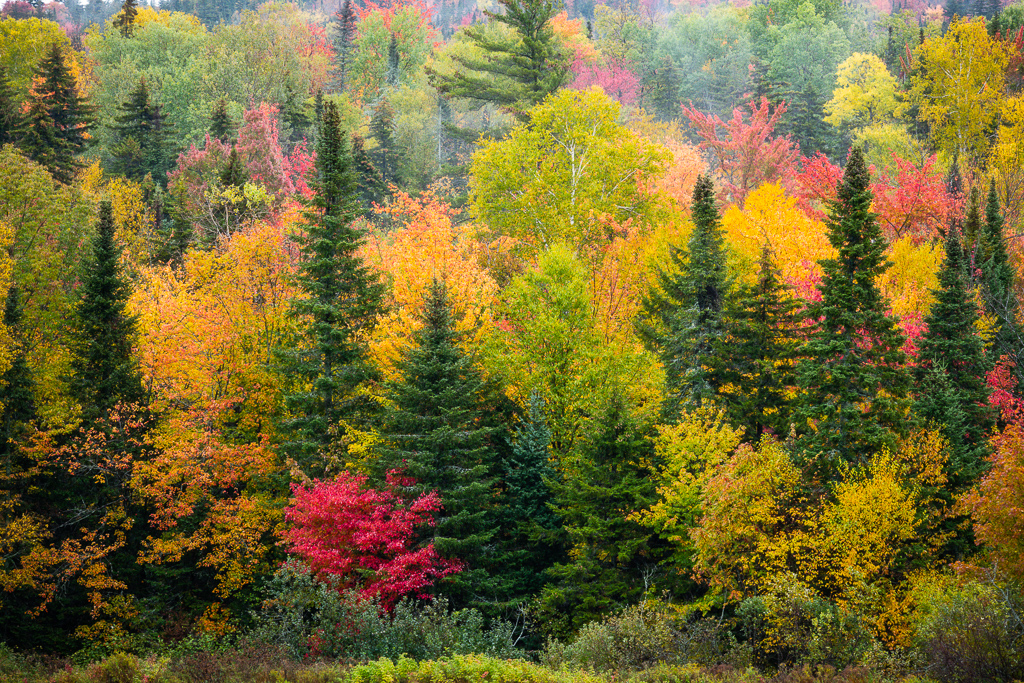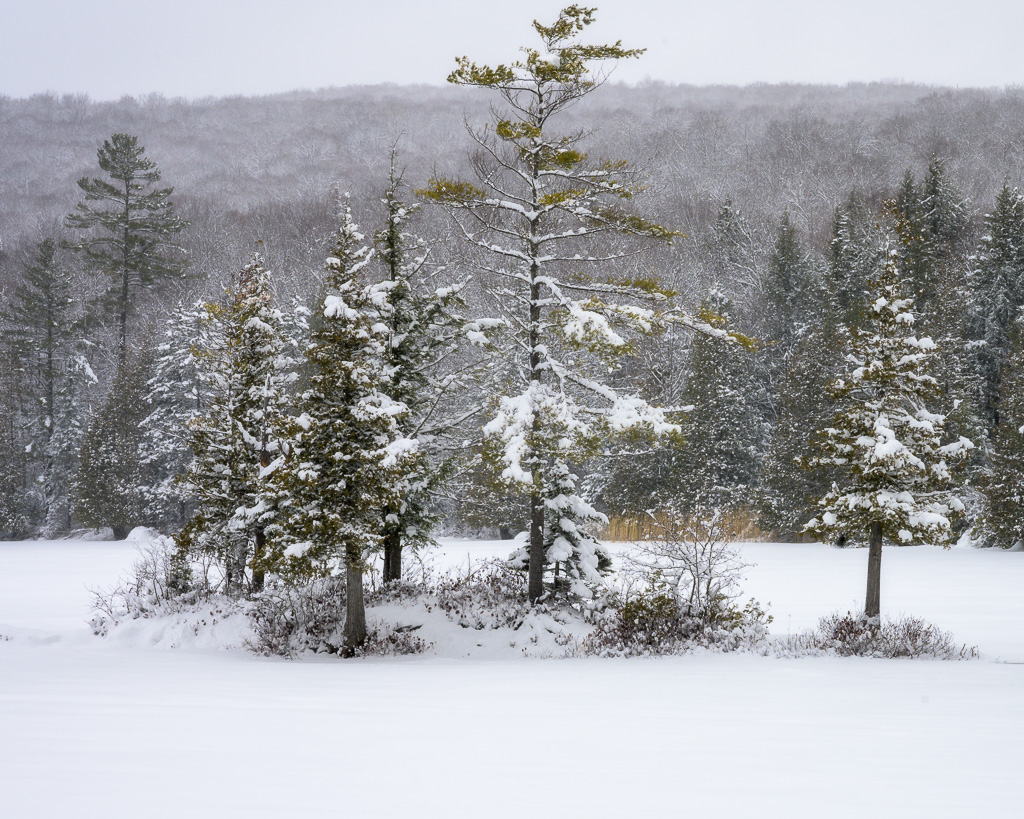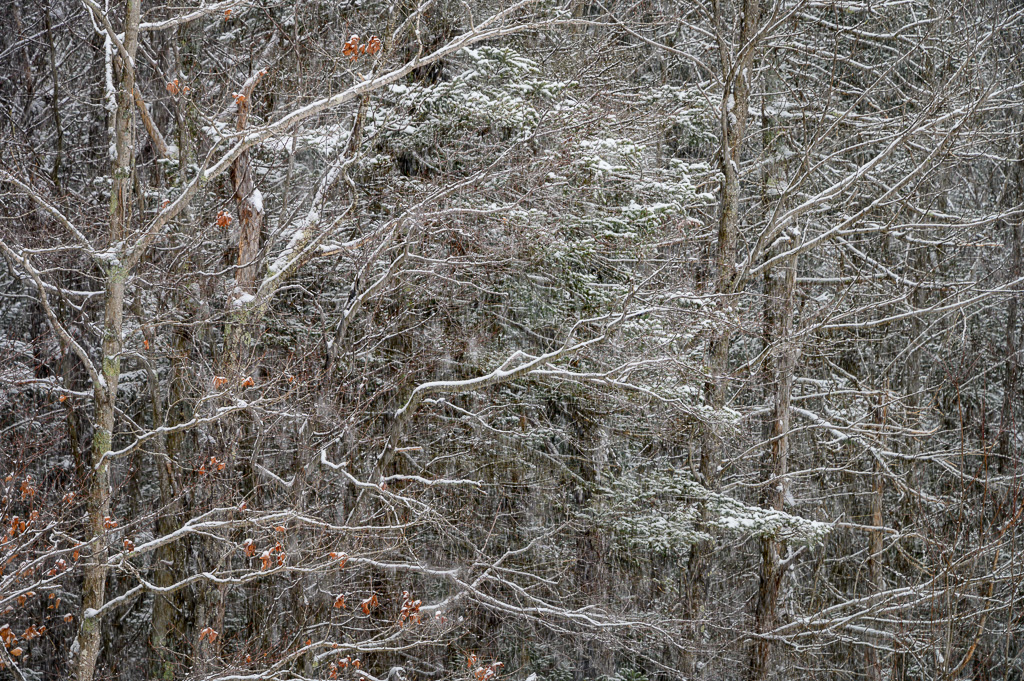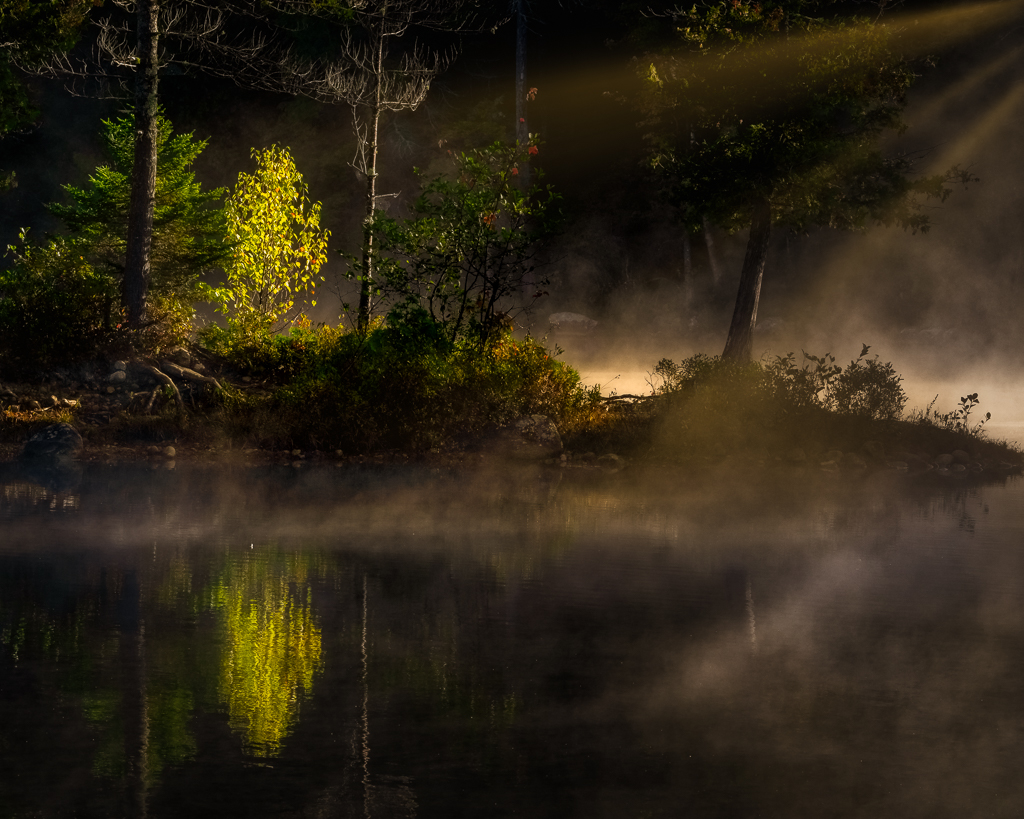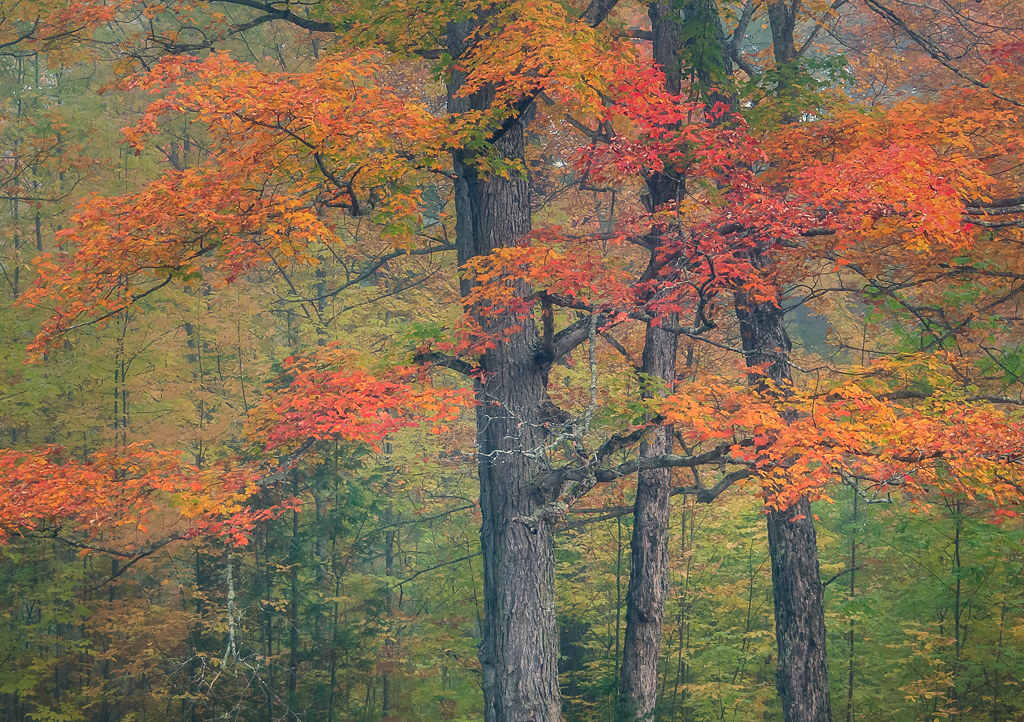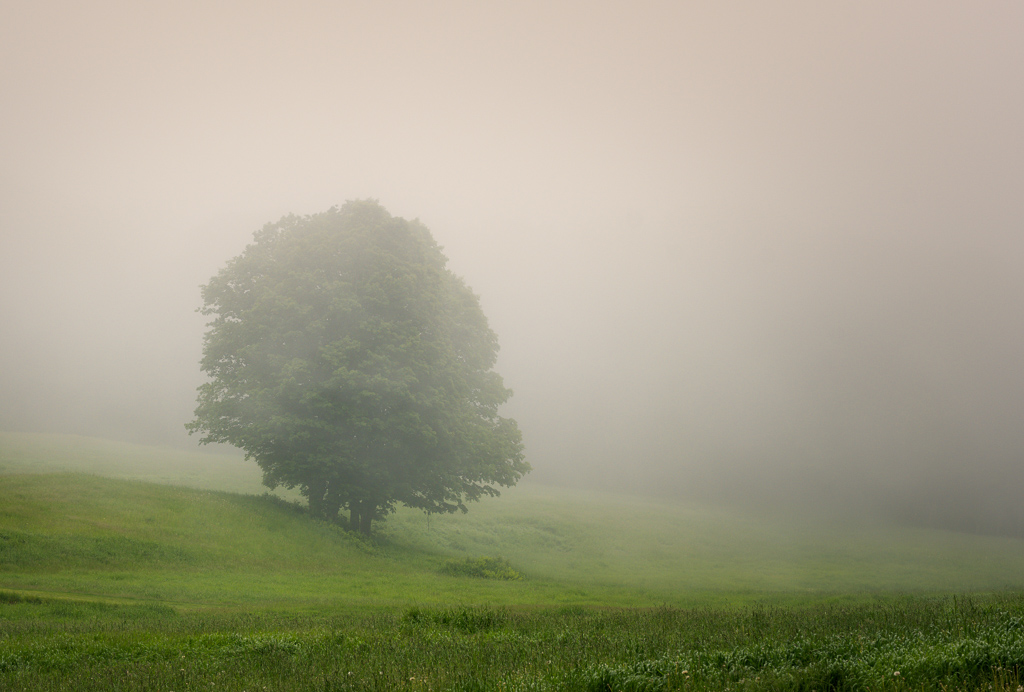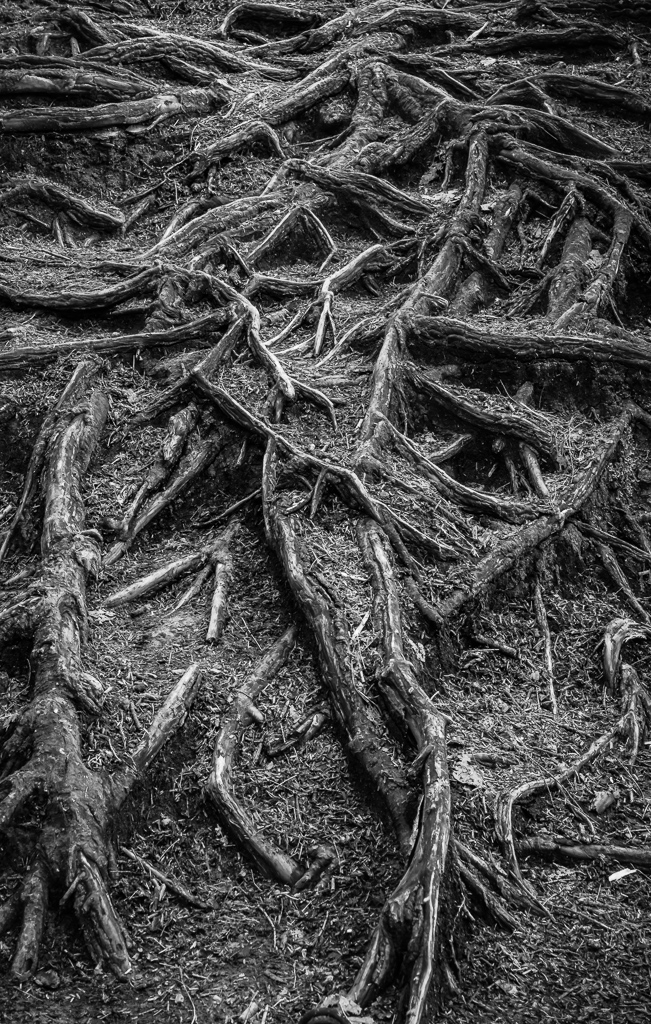Vermont is known for many things, Mountains, lakes, streams, and farms top the list. All these items are essential elements of rural life, but without trees, it would not offer the same appeal. Trees, of course, provide a whole host of natural benefits that are both important and necessary for a properly functioning ecosystem – I will leave that to the scientists. To a landscape photographer photographing Vermont, trees are everything. They have photographic value in all seasons, whether they are showing leaves or shut down for winter.
When people think of Vermont, they visualize rolling mountains chock full of trees; for most, it’s autumn, and the leaves are bright red and orange. It was not always that way. There was a time when Vermont had no trees, and the mountainsides were bare – think Ireland or Scotland. It’s the early 19th century, and sheep farms fill the landscape. Most of the trees had been cleared for space and/or industry. Hard for us to imagine a bare Vermont today. In the 1840s, things began to change; the deforestation led to eroded soils, leading to decreased soil productivity. People began to look elsewhere for productive soils, and they found it out west. The United States government offered free land to farmers, and gold fortunes were being made in the western rivers. Stuck with barren soil and better prospects elsewhere, many people migrated out of Vermont. The landscape left to its own began to grow. During this time American scholar, George Perkins Marsh released his book “Man and Nature: or Physical Geography as Modified by Human Action.” Mr. Marsh’s book is one of the first works to document the effects of human activity on the environment, and it helped launch the modern conservation movement. The re-forestation of Vermont plays a big role in today’s “Green” movement. If you are ever in Woodstock, Vermont, you can visit the Marsh-Billings National Park to visit Mr. Marsh’s home and learn about his legacy and how it was passed down to future owners of the property such as the Billings family and the Rockefeller’s.
Vermont is home to many different species of trees. The Red Maple, White Birch, Ash, Northern Oak, and the Sugar Maple are the most prevalent. The Maples, especially the Sugar Maple, is very important to the state’s economy. It produces the famous Maple Syrup and provides the spectacular vivid colors of fall foliage each year that keep the photographers coming. Trees make wonderful subjects and can be represented in many ways. You can take the minimalist approach of one lone tree in a misty field or bring order to a dense forest’s organized chaos – it all works. Trees come in all shapes and sizes and work with all lens focal lengths. Some of the greatest nature and landscape photographers spent large amounts of their time and talents just photographing trees.
Trees may be plentiful, and they usually are very cooperative models. They often stand up straight, they never run away, and they never blink their eyes. This does not mean the good tree photography is easy – it’s not. The simplest subjects often make the most complex images. The composition is king. A strong composition often takes time to develop. Trees often have “busy” surroundings, and the goal is to simplify a complex scene. An image that is too busy robs the viewer of any chance of seeing what the photographer’s vision. Trees often produce leading lines, especially those with a complex root structure. A tree is not just the part that reaches for the sky. It is so much more. It is part of the soil structure that circles the tree. Exposed vine-like roots can be part of the composition or even the subject itself. In Autumn, the leaves become the tree’s most attractive asset. Photographers come from far and wide to capture nature’s tapestry. Trees have to work in conjunction with Mother Nature to get the most of their autumn performance. The tree needs cool, crisp nights and warm sunny days in order to shine it’s brightest. The Leaves do not need to be attached to the tree for a pleasing image. Don’t overlook colorful leaves on the ground surrounding the mother tree for compelling compositions. Leaves spend most of the year on the ground until Mother Nature’s constant badgering grinds them to dust. The branches of its tree are just a summer home.
If you always viewed trees as just a complementary element in your photographs, try making them the main subject. Once honed, this new skill can offer a world of new opportunities and take your photographs in a more expressive direction. Give it a try; sometimes, you can see the trees through the forest.
